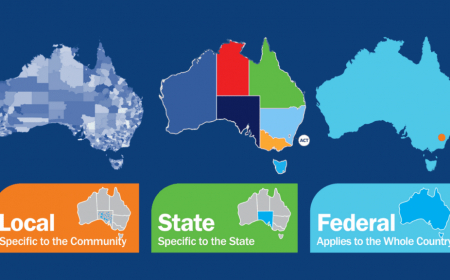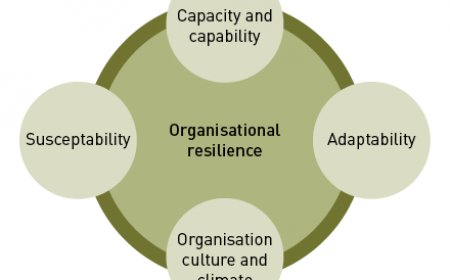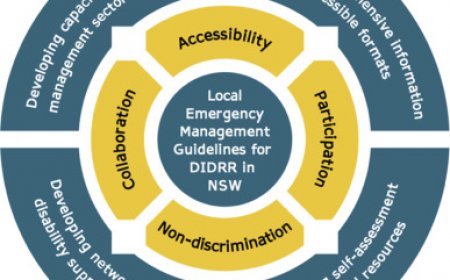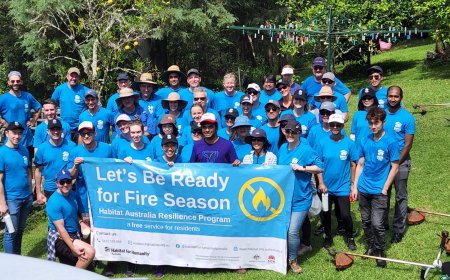Politics: Grassroots Movements Shaping Political Agendas
Discover how grassroots movements are reshaping political agendas worldwide. Learn about their strategies, impacts, and challenges while gaining insights into supporting transformative change.
In today’s rapidly evolving political landscape, grassroots movements have emerged as pivotal forces shaping the direction of governance and policy-making. These bottom-up initiatives, often fueled by ordinary citizens, are transforming how political agendas are formed and executed. Unlike traditional top-down approaches, grassroots movements empower individuals to take collective action, ensuring that their voices are heard at every level of government. This article delves into the intricate dynamics of these movements, exploring their origins, strategies, impact, and future potential.
The Rise of Grassroots Movements in Modern Politics
What Are Grassroots Movements?
At their core, grassroots movements are community-driven efforts aimed at addressing specific social, economic, or political issues. They are characterized by their decentralized nature, relying on the active participation of individuals rather than hierarchical leadership structures. These movements often begin with small groups of passionate individuals who share a common cause, gradually expanding their reach through networks of like-minded people.
Grassroots movements thrive on inclusivity, ensuring that marginalized voices are not only heard but also actively shape the direction of advocacy. For example, movements advocating for racial justice, gender equality, or climate action often start with local protests or petitions before gaining national or even global traction.
"Grassroots movements are the embodiment of democracy in action, where power is reclaimed by the people."
Why Are Grassroots Movements Gaining Momentum?
Several factors contribute to the growing prominence of grassroots movements:
-
Distrust in Traditional Institutions : Many citizens feel disillusioned with conventional political systems, leading them to seek alternative ways to effect change.
- In recent years, scandals involving corruption, inefficiency, and lack of transparency have eroded public trust in governments and corporations.
- Grassroots movements offer a way for citizens to bypass these institutions and directly influence decision-making processes.
-
Technological Advancements : Social media platforms and digital tools have made it easier for activists to organize, communicate, and mobilize supporters globally.
- Platforms like Twitter, Facebook, and Instagram allow real-time updates and coordination across borders.
- Online petitions hosted on websites like Change.org enable individuals to gather signatures quickly and present demands to authorities.
-
Global Challenges : Issues such as climate change, inequality, and human rights violations have galvanized individuals to take matters into their own hands.
- Climate activism, led by organizations like Fridays for Future, has inspired millions of young people worldwide to demand urgent environmental reforms.
- Movements against systemic racism, such as Black Lives Matter (BLM), highlight the persistent need for racial justice and accountability.
-
Increased Accessibility to Information : The internet has democratized access to information, enabling individuals to educate themselves about pressing issues and connect with others who share their concerns.
- Open-source data and investigative journalism have exposed injustices that might otherwise remain hidden.
- Educational campaigns conducted by grassroots groups help raise awareness and foster informed participation.
-
Youth Engagement : Younger generations are increasingly politically engaged, driven by a desire to create a better future. Their energy and idealism fuel many modern grassroots movements.
Historical Context: Grassroots Movements That Changed the World
Understanding the historical significance of grassroots movements provides valuable insights into their enduring influence on political agendas.
The Civil Rights Movement (1950s-1960s)
One of the most iconic examples of a grassroots movement is the Civil Rights Movement in the United States. Led by figures like Martin Luther King Jr., Rosa Parks, and countless unnamed activists, this movement challenged systemic racism and segregation. Through protests, boycotts, and civil disobedience, it successfully pressured lawmakers to enact landmark legislation, including the Civil Rights Act of 1964.
Key strategies employed during this era included:
- Nonviolent Resistance : Peaceful protests, such as the Montgomery Bus Boycott and the March on Washington, demonstrated the moral high ground of the movement.
- Community Organizing : Local churches and community centers served as hubs for planning and mobilization.
- Legal Advocacy : Lawyers and activists worked together to challenge discriminatory laws in court.
The Environmental Movement (1970s-Present)
The environmental movement began as a grassroots effort to address pollution and ecological degradation. Events like Earth Day and organizations such as Greenpeace have played crucial roles in raising awareness and influencing policies related to climate change and conservation.
- Earth Day (1970) : Initiated by Senator Gaylord Nelson, Earth Day brought together millions of Americans to advocate for environmental protection. It paved the way for the establishment of the Environmental Protection Agency (EPA).
- Greenpeace : Founded in 1971, this organization uses direct action and advocacy to combat environmental threats, from whaling to deforestation.
The Arab Spring (2010-2012)
The Arab Spring demonstrated the power of grassroots activism in authoritarian regimes. Sparked by protests in Tunisia, this wave of uprisings spread across the Middle East, demanding democratic reforms and greater accountability from governments.
- Social Media's Role : Platforms like Facebook and Twitter were instrumental in organizing protests and disseminating information.
- Decentralized Leadership : Unlike traditional revolutions, the Arab Spring lacked centralized leadership, making it harder for authorities to suppress.
Strategies Employed by Grassroots Movements
To achieve their goals, grassroots movements employ a variety of strategies tailored to their specific contexts. Below are some of the most effective tactics used by these movements:
Community Organizing
Building strong local networks is fundamental to the success of any grassroots initiative. By fostering relationships within communities, organizers can identify shared concerns and develop actionable solutions.
- Door-to-Door Campaigns : Activists visit homes to engage directly with residents, explaining their mission and encouraging participation.
- Town Hall Meetings : Public forums provide opportunities for dialogue and consensus-building.
Digital Activism
Social media platforms like Twitter, Facebook, and Instagram have revolutionized grassroots organizing. Hashtags, viral campaigns, and online petitions enable activists to reach wider audiences and amplify their messages.
- Hashtag Activism : Campaigns like #MeToo and #BlackLivesMatter have sparked global conversations and inspired offline action.
- Crowdsourcing Ideas : Platforms like Reddit allow users to collaborate on strategies and share resources.
Protests and Demonstrations
Public demonstrations remain a powerful tool for drawing attention to pressing issues. Whether through marches, sit-ins, or strikes, these events create visible expressions of dissent and solidarity.
- Symbolic Actions : Creative protests, such as die-ins or art installations, capture media attention and provoke thought.
- Global Coordination : Movements like Extinction Rebellion synchronize actions across multiple cities to maximize impact.
Coalition Building
Forming alliances with other organizations and stakeholders strengthens the impact of grassroots movements. Collaborative efforts ensure diverse perspectives are represented and resources are pooled effectively.
- Cross-Issue Partnerships : For example, environmental groups may partner with labor unions to address both climate justice and workers' rights.
- International Solidarity : Global networks like La Via Campesina unite farmers and rural workers worldwide to advocate for food sovereignty.
Impact of Grassroots Movements on Political Agendas
Grassroots movements have consistently proven their ability to shape political agendas, both locally and globally. Their influence can be observed in various domains, including policy reform, electoral outcomes, and cultural shifts.
Policy Reforms
Many significant policy changes can be attributed to grassroots advocacy. For instance:
- The legalization of same-sex marriage in numerous countries was driven by LGBTQ+ rights movements.
- Campaigns against plastic waste led to bans on single-use plastics in several regions.
Electoral Outcomes
Grassroots movements also play a critical role in influencing elections. By endorsing candidates aligned with their values, these movements can sway voter turnout and preferences. Examples include Bernie Sanders’ presidential campaigns, which were heavily supported by progressive grassroots groups.
Cultural Shifts
Beyond tangible policy changes, grassroots movements contribute to broader societal transformations. They challenge entrenched norms and inspire new ways of thinking about justice, equality, and sustainability.
Challenges Faced by Grassroots Movements
Despite their successes, grassroots movements encounter numerous obstacles that hinder their progress.
Resource Constraints
Limited funding and manpower often restrict the scope of grassroots initiatives. Without adequate resources, sustaining long-term campaigns becomes challenging.
Resistance from Established Powers
Governments and corporations may actively oppose grassroots movements, using legal, financial, or even violent means to suppress dissent.
Internal Conflicts
Disagreements over strategy, leadership, or priorities can weaken cohesion within grassroots organizations, undermining their effectiveness.
Tips for Supporting Grassroots Movements
If you’re inspired to support or join a grassroots movement, consider the following tips:
- Educate Yourself : Understand the issue thoroughly before getting involved.
- Volunteer Your Time : Offer your skills and expertise to assist organizers.
- Donate Strategically : Contribute financially to reputable organizations working on causes you care about.
- Amplify Voices : Use your platform to share information and advocate for change.
Comparison Table: Grassroots vs. Top-Down Movements
Review: Verdict on Grassroots Movements
Grassroots movements represent a dynamic and resilient force in modern politics. While they face significant challenges, their capacity to drive meaningful change cannot be overstated. By harnessing collective energy and leveraging innovative strategies, these movements continue to redefine how political agendas are shaped.
Conclusion
In conclusion, grassroots movements are indispensable agents of transformation in contemporary society. They embody the spirit of democracy, empowering ordinary citizens to hold institutions accountable and advocate for equitable policies. As we navigate increasingly complex global challenges, supporting and participating in grassroots initiatives will be essential for fostering sustainable progress.
Frequently Asked Questions (FAQs)
-
What defines a grassroots movement? Grassroots movements are community-driven efforts initiated by ordinary citizens to address specific issues without reliance on centralized leadership.
-
How do grassroots movements differ from traditional activism? Unlike traditional activism, grassroots movements emphasize inclusivity, decentralization, and direct participation from affected communities.
-
Can grassroots movements influence national policies? Yes, grassroots movements have successfully influenced national policies through sustained advocacy and coalition-building.
-
What role does social media play in grassroots organizing? Social media serves as a vital tool for communication, mobilization, and amplification of grassroots messages.
-
Are grassroots movements always nonviolent? While many grassroots movements prioritize nonviolence, others may adopt more confrontational tactics depending on their objectives.
-
How can I start a grassroots movement? Begin by identifying a clear issue, building a team of committed individuals, and utilizing available resources to spread awareness.
-
Do grassroots movements require funding? While not mandatory, funding can enhance the scale and sustainability of grassroots efforts.
-
What are some examples of successful grassroots movements? Examples include the Civil Rights Movement, the Women’s Suffrage Movement, and the Climate Strike Movement.
-
How do grassroots movements sustain themselves over time? Longevity depends on adaptability, consistent engagement, and securing ongoing support from participants and allies.
-
Is it possible for grassroots movements to fail? Like any endeavor, grassroots movements face risks of failure due to internal conflicts, external pressures, or lack of resources.
What's Your Reaction?
 Like
0
Like
0
 Dislike
0
Dislike
0
 Love
0
Love
0
 Funny
0
Funny
0
 Angry
0
Angry
0
 Sad
0
Sad
0
 Wow
0
Wow
0














































